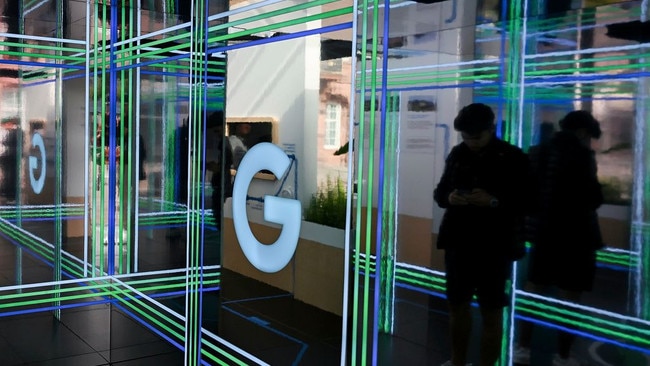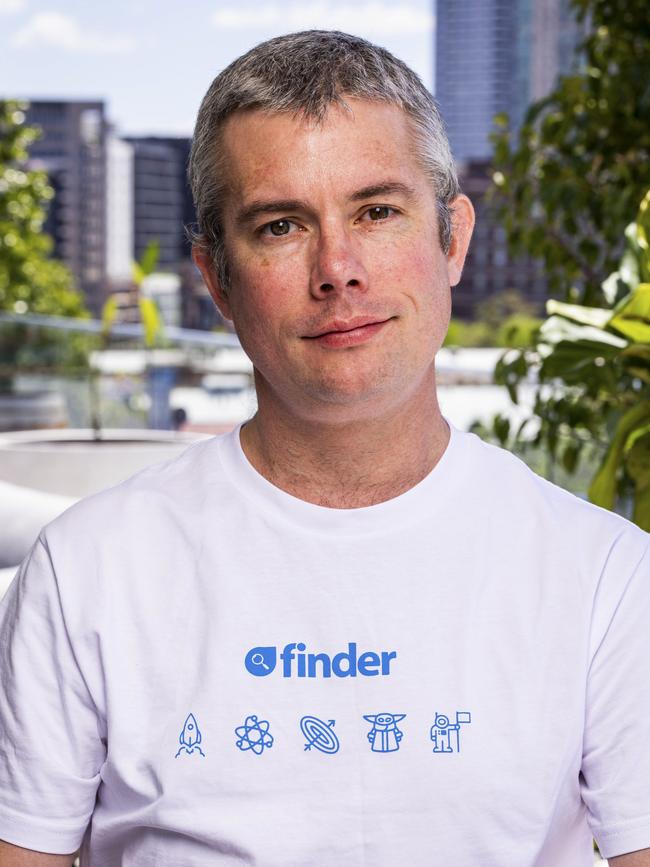How cloud hopping has become the hidden battlefront in the AI arms race
Cloud computing has emerged as the hidden battlefield in the AI arms race as the market is expected to soar above $1 trillion. Here’s how Finder turned it to its advantage.

Finder earns its living helping Australians find a better deal. So it’s no surprise that the comparison website used its own expertise to do what many companies consider is cost-prohibitive: switch cloud providers.
Cloud computing exploded during the pandemic to support remote working – allowing employees to access troves of company data from any location. It has now emerged as the hidden battlefield in the artificial intelligence arms race.
AI relies on data, which is stored in powerful computer warehouses that house the cloud, sparking strong demand and hot competition.
Worldwide end-user spending on public cloud services is forecast to grow 20.4 per cent to total $US678.8bn ($1.03 trillion) this year, up from $US563.6bn in 2023, according to Gartner.
But switching providers is not easy. Transfer fees can total tens of thousands to millions of dollars, given the sheer amount of data involved, deterring companies from looking for a better deal.
Finder chief technology officer Joe Waller said the company was “very well established” with Amazon’s AWS – which dominates the global market with a share of about 40 per cent, according to Gartner.
When Finder considered switching to Google Cloud, Mr Waller thought it would “tie us up for a very long time, and be very expensive”.
But Google – which Gartner estimates has a share of about 7.5 per cent of the global cloud computing market, making it the world’s fourth-biggest provider behind Amazon, Microsoft and Alibaba – was keen to strike a deal.


“The Google team partnered with us. They worked with another (cloud) provider called Searce. And together Searce and Google and Finder really focused on the win-win of the relationship,” Mr Waller told The Australian from Las Vegas.
Eventually, a deal was hammered out that involved Finder forecasting cost savings of about 12 per cent. The target was met easily and generated a further 50 per cent cost reduction on its AWS contract.
“We had a particular run rate with AWS. I’m not allowed to divulge the specifics – I’d love to because they were significant,” Mr Waller said.
“We had forecast a 12 per cent cost reduction running on GCP (Google Cloud Platform). We were able to get that to a well over 50 per cent cost reduction. So you’ve got the same product, same services – we’re running performance equivalent and we’ve grown our productivity. I’ve got a lot more people able to work on our infrastructure than previously, and it’s costing less than half of what we had forecast.”
Data centres, given the computing power required, are expensive to build and maintain. AWS is investing about $13.2bn on its Australian cloud infrastructure across the eastern seaboard in the next three years, and is still attracting big name customers. ASX-listed health insurer Nib announced this week it had migrated more than 95 per cent of its on premise workloads across all business lines to AWS to increase its use of AI.
Nib group chief information officer Brendan Mills said: “The move is very much a strategic decision on many fronts.”
“We are confident about the environment; AWS provides us with agility and flexibility, it allows nib to build capability in the way we operate our business and contain costs.”
But Finder’s experience shows how quickly the market is evolving since ChatGPT catapulted generative AI – the ability to extract clear information from large data sets via simple verbal prompts – into the mainstream 18 months ago.
“When we first looked at GCP, frankly, it didn’t have comparability at the time,” Mr Waller said.
“But this time, so much has changed. It’s incredible. We’ve got access to new capabilities we didn’t have access to before. We have access to products and features that we would have had to have (previously) paid on top of (the AWS contract) that come with GCP.”
Mr Waller said the Google deal would incorporate generative AI into its product offering and eventually offer more tailored comparisons for customers.
“Generative AI is front and centre in how we aim to help people make even better financial decisions by matching comparisons more accurately with their personal situations, requirements and constraints,” he said. “Google Cloud gives us a trusted and transparent environment in which to build out those capabilities at a speed that keeps us ahead of the competition.”
Matt Zwolenski, director and chief technologist at Google Cloud Australia and New Zealand, said companies, particularly the banks and other regulated entities, were adopting a multi-cloud approach.
“Finder’s journey shows the importance of reviewing an organisation’s cloud platform and strategy to ensure fit for purpose when it comes to emerging technology,” he said.
The author travelled to Las Vegas as a guest of Google Cloud.






To join the conversation, please log in. Don't have an account? Register
Join the conversation, you are commenting as Logout